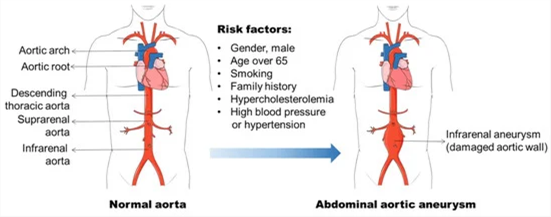The nurse and unlicensed assistive personnel (UAP) on the telemetry unit are caring for four clients. Which nursing action can be delegated to the UAP?
Checking the client's catheter site after a coronary angiogram
Teaching a patient about exercise electrocardiography
Attaching ECG monitoring electrodes after a patient bathes
Monitoring a client after a transesophageal echocardiogram
The Correct Answer is D
Monitoring a client after a transesophageal echocardiogram involves observing the client for any immediate post-procedure complications or adverse reactions. This may include assessing vital signs, monitoring for signs of bleeding or infection, and reporting any concerning symptoms or changes in the client's condition to the nurse.
Checking the client's catheter site after a coronary angiogram requires assessing the site for bleeding, hematoma, or signs of infection. This task involves more complex assessment skills and would typically be performed by the nurse.
Teaching a patient about exercise electrocardiography involves providing education on the purpose of the test, the procedure itself, and any preparation or precautions the patient needs to take. This task requires specialized knowledge and is best performed by the nurse who can address the patient's specific questions and concerns.
Attaching ECG monitoring electrodes after a patient bathes requires technical knowledge and skill in properly placing the electrodes and ensuring accurate ECG readings. This task also falls within the scope of the nurse's responsibilities.
Delegation should be based on the UAP's skill set, training, and the complexity of the task. While the UAP can provide valuable support in monitoring a client after a transesophageal echocardiogram, the other tasks mentioned require the expertise and knowledge of a nurse.
Nursing Test Bank
Naxlex Comprehensive Predictor Exams
Related Questions
Correct Answer is D
Explanation
The nurse should prioritize notifying the surgeon and anesthesiologist as the first action. The absent pulses, coolness, and mottled appearance of the leg indicate potential compromised blood flow to the lower extremity, which could be a sign of vascular compromise or acute limb ischemia. These findings are concerning after the repair of an abdominal aortic aneurysm and require immediate medical attention.
Wrap both legs in a warming blanket: While it is important to maintain the client's body temperature, this action alone may not address the underlying issue of compromised blood flow and potential limb ischemia. Notifying the surgeon and anesthesiologist is the priority to address the immediate concern.
Compare findings to the preoperative assessment of the pulses: While comparing findings to the preoperative assessment is important for evaluating the client's condition, it should not delay immediate action. The priority in this situation is to promptly notify the surgeon and anesthesiologist to address the potential vascular compromise.
Document the findings and recheck in 15 minutes: Documenting the findings is an important step in the nursing process, but it should not take precedence over immediate intervention. The concerning signs of absent pulses, coolness, and mottled appearance require urgent attention, and delaying notification could lead to further complications.

Correct Answer is C
Explanation
Based on the information provided, an Ankle-Brachial Index (ABI) of 0.89 indicates a mild reduction in blood flow to the lower extremities, suggesting peripheral arterial disease (PAD). In this case, the nurse should educate the client about the use of compression stockings.
Compression stockings are a conservative management approach for peripheral arterial disease. They help improve blood flow and alleviate symptoms by applying pressure to the legs, promoting venous return, and reducing swelling. Educating the client about the use of compression stockings can help improve circulation and manage symptoms such as pain, cramping, and fatigue.
Let's review the other options and explain why they are not the most appropriate interventions in this scenario:
Document the information as a normal finding: An ABI of 0.89 indicates an abnormal finding suggestive of peripheral arterial disease. It should not be documented as a normal finding, as it requires further assessment and intervention.
Prepare the client for an arterial bypass: An arterial bypass is a surgical intervention that is typically reserved for more severe cases of peripheral arterial disease. With an ABI of 0.89, which indicates mild reduction in blood flow, arterial bypass is not the first-line intervention. Conservative measures and medical management are usually recommended initially.
Anticipate a prescription for clopidogrel and simvastatin: Medications like clopidogrel (antiplatelet) and simvastatin (statin) may be prescribed for peripheral arterial disease. However, the next appropriate step after obtaining an ABI of 0.89 would be to educate the client about the use of compression stockings as a conservative management option before considering medication therapy.

Whether you are a student looking to ace your exams or a practicing nurse seeking to enhance your expertise , our nursing education contents will empower you with the confidence and competence to make a difference in the lives of patients and become a respected leader in the healthcare field.
Visit Naxlex, invest in your future and unlock endless possibilities with our unparalleled nursing education contents today
Report Wrong Answer on the Current Question
Do you disagree with the answer? If yes, what is your expected answer? Explain.
Kindly be descriptive with the issue you are facing.
